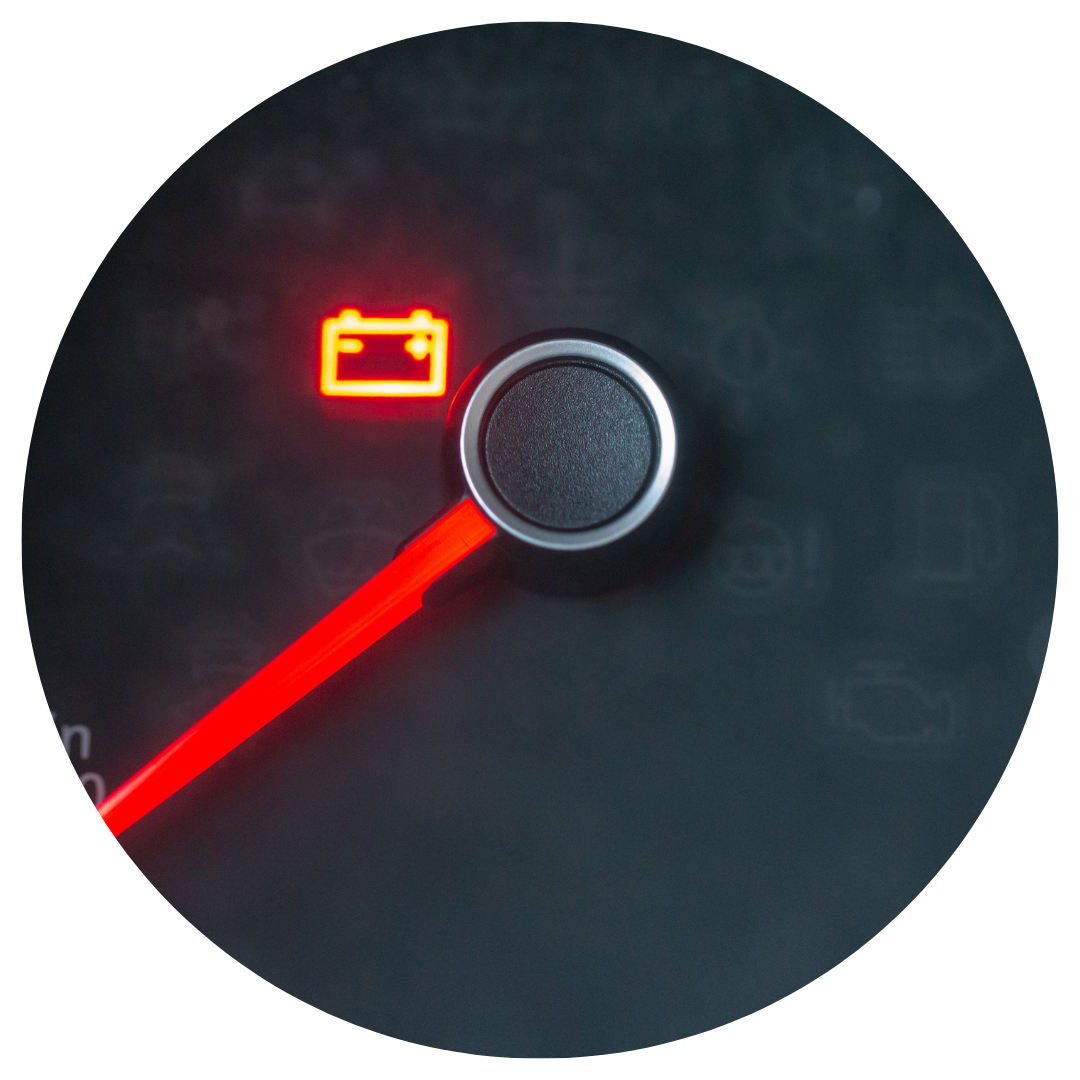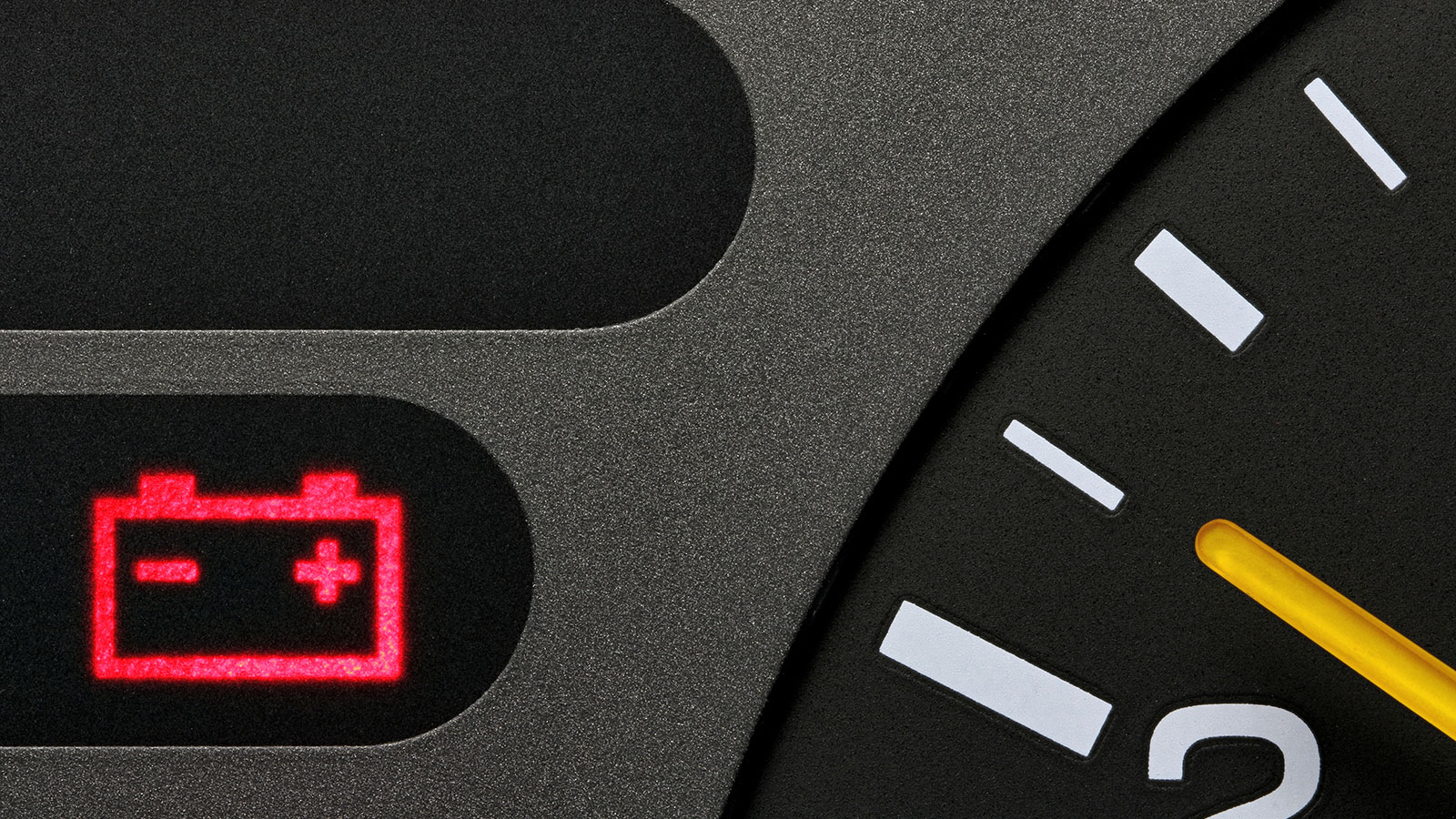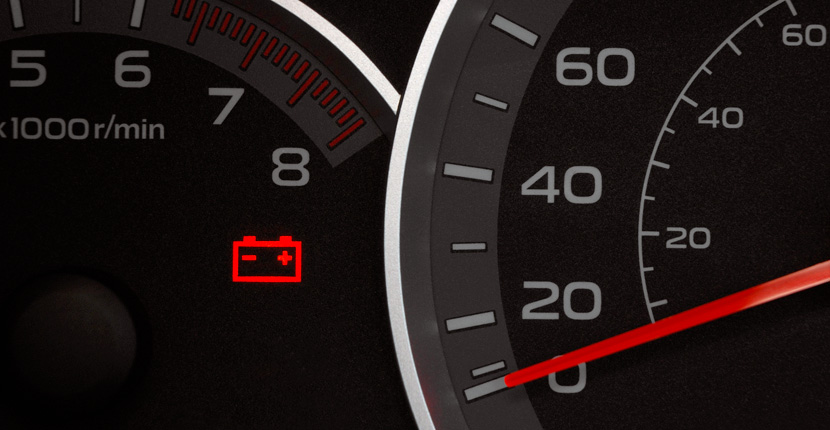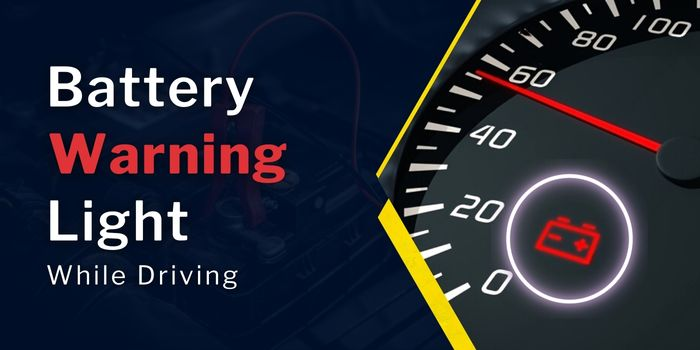The battery light on in car while driving that means a charging system issue. Maybe the battery or the alternator are failing down.
If you see the battery light on your dashboard, it is an alarming issue for you. This warning light typically gives you a signal of a problem with your car’s charging system. It means that the alternator isn’t charging the battery properly. A failing battery could also be the culprit.
If you ignore the warning and let it go to a dead battery, it leaves you stranded. To avoid potential breakdowns, promptly check the electrical system you have to diagnose the issue early. It can save you from costly repairs. If you maintain regularly, it will help you to ensure your car’s electrical components are in good condition. Always be careful of your dashboard warnings for a safe driving experience.
Causes Of Battery Light on in Car While Driving
When you see that battery light on in your car suddenly, it means it is providing you a warning. A faulty alternator, damaged battery, or loose connection can cause this problem. Let’s see the main causes of this warning issue:
Faulty Alternator
A faulty alternator is a common cause of the battery light. The alternator charges the battery while driving. If it fails, the battery will not charge. This can cause the battery light to turn on. Signs of a bad alternator include dim lights and strange noises.
Damaged Battery
A damaged battery can also trigger the battery light. Batteries have a limited lifespan. Over time, they can lose their ability to hold a charge. A dead or dying battery will cause the light to activate. Regular battery checks can prevent this issue.
Loose Or Corroded Connections
Loose or corroded connections can disrupt the electrical system. This can cause the battery light to turn on. Check the battery terminals for corrosion. Tighten any loose connections. Cleaning the terminals can solve this problem.
Immediate Steps To Take
Seeing the battery light on while driving can be alarming. It often signals a problem with your car’s electrical system. Knowing the right steps to take can prevent further damage. Here’s what you should do immediately:
Turn Off Unnecessary Electronics
The first step is to turn off unnecessary electronics. This includes the radio, air conditioning, and any other non-essential devices. Doing this can help conserve the battery power. It ensures you have enough power to reach a safe location.
Find A Safe Place To Stop
Next, you need to find a safe place to stop. Look for a parking lot or pull over to the side of the road. Avoid stopping in areas with heavy traffic. Safety should be your top priority.
Once you have stopped, turn off the engine. Check under the hood for any obvious issues. Look for loose cables or corrosion on the battery terminals. If you notice anything unusual, it’s best to call for professional help.
| Step | Action |
|---|---|
| 1 | Turn off unnecessary electronics |
| 2 | Find a safe place to stop |
| 3 | Turn off the engine |
| 4 | Check under the hood |
Taking these steps can help you manage the situation effectively. It can prevent further damage to your car’s electrical system. Always prioritize safety and seek professional help when needed.
Diagnosing The Issue
Seeing the battery light on while driving can be worrying. Diagnosing the problem quickly is important. Below are steps to identify the issue.
Using A Voltmeter
A voltmeter helps check the battery voltage. First, turn off your car. Connect the voltmeter’s red probe to the battery’s positive terminal. Then, connect the black probe to the negative terminal.
Normal voltage should read between 12.4 and 12.7 volts. Start the car and check again. The reading should be between 13.7 and 14.7 volts. If not, the alternator might be faulty.
Checking Belt Tension
The alternator belt must be tight. A loose belt can cause the battery light to come on. Check the belt for any visible damage.
To test tension, press the belt with your finger. It should not move more than half an inch. If it does, it needs adjustment or replacement.
Inspecting For Corrosion
Corroded battery terminals can disrupt the electrical connection. Look at the battery terminals for any white or greenish buildup. This is corrosion.
To clean, mix baking soda with water. Use a brush to scrub the terminals gently. Ensure you wear gloves and safety glasses.

Credit: www.unitedtire.com
Common Symptoms
When the battery light comes on while driving, it signals potential issues. Recognizing these symptoms early can prevent further damage to your vehicle. Let’s delve into some common symptoms associated with a battery light issue.
Dimming Lights
Dimming lights are a clear sign of battery problems. When the battery or alternator is failing, the car’s lights may not receive enough power. This leads to headlights and interior lights appearing less bright than usual. Dimming lights often occur during night driving and can be dangerous if not addressed promptly.
Electrical Issues
Electrical issues are another common symptom of battery problems. You may notice malfunctioning of power windows, radio, or dashboard lights. Electrical components rely on a steady power supply. When the battery is failing, these components may act erratically or stop working entirely.
Engine Stalls
An engine stall is a more severe symptom of battery or alternator issues. If your car stalls while driving, it may be due to insufficient power being supplied to the engine. This can be a dangerous situation, especially on busy roads. Engine stalls are often preceded by other warning signs like dimming lights or electrical issues.
| Symptoms | Description |
|---|---|
| Dimming Lights | Headlights and interior lights appear less bright. |
| Electrical Issues | Malfunctioning of power windows, radio, or dashboard lights. |
| Engine Stalls | Car stalls due to insufficient power to the engine. |
In summary, keep an eye out for these common symptoms. Addressing them early can save you from unexpected breakdowns and costly repairs. If you notice any of these signs, it’s time to get your battery and alternator checked.
Preventive Maintenance
Seeing the battery light on while driving can be alarming. Preventive maintenance helps avoid this issue. Here, we discuss simple steps to keep your car’s electrical system in top shape.
Regular Battery Checks
Regular battery checks ensure your car battery is healthy. Use a voltmeter to check the battery voltage. A healthy battery should read around 12.6 volts. If the reading is below 12.4 volts, the battery may be weak.
Check for corrosion around the battery terminals. Corrosion can interrupt the electrical flow. Clean any corrosion with a mixture of baking soda and water. Rinse with clean water and dry thoroughly.
Replace the battery if it is over three years old. Older batteries are more prone to failure.
Alternator Inspection
The alternator charges the battery while the engine runs. A faulty alternator can cause the battery light to come on. Inspect the alternator belts for wear and tear. Replace any frayed or cracked belts.
Listen for unusual noises from the alternator. A whining or grinding sound can indicate a problem. Use a voltmeter to check the alternator output. A healthy alternator should produce between 13.8 and 14.2 volts.
Consider having a professional mechanic perform a more thorough inspection. They can check the alternator bearings, wiring, and connections.
Clean Connections
Clean battery connections ensure a good electrical flow. Dirty or loose connections can cause the battery light to come on. Disconnect the battery terminals before cleaning. Use a wire brush to clean the terminals and connectors.
Apply a thin layer of petroleum jelly to the terminals. This helps prevent future corrosion. Ensure the connections are tight when reconnecting the battery. Loose connections can cause intermittent electrical issues.
Inspect other electrical connections in the engine bay. Clean and tighten any that appear dirty or loose.

Credit: auto.howstuffworks.com
When To Seek Professional Help
The battery light in your car can signal various issues. Sometimes, it might be a minor problem that you can fix yourself. But there are times when you should consult a professional. Knowing when to seek professional help can save you time, money, and potential headaches.
Persistent Battery Light
If the battery light stays on for an extended period, it means there is a serious issue. A persistent battery light often indicates a failing alternator or a faulty voltage regulator. These parts are crucial for your car’s electrical system. They ensure your battery charges properly while driving.
Here are some signs that suggest you need professional help:
- The light remains on for more than a few minutes.
- The light flickers or changes intensity.
- The battery light accompanies other warning lights.
Ignoring a persistent battery light can lead to a dead battery. This can leave you stranded and require a tow to the nearest repair shop.
Frequent Electrical Failures
Frequent electrical failures are another sign you should seek professional help. Electrical failures can include dimming headlights, malfunctioning radio, and power window issues. These failures often indicate a problem with the electrical system.
Common electrical failures to watch for:
| Issue | Possible Cause |
|---|---|
| Dim headlights | Weak battery or alternator issues |
| Radio not working | Blown fuse or electrical short |
| Power windows failing | Faulty wiring or switch problems |
If you experience any of these issues, it’s time to consult a professional. They can diagnose the problem accurately and provide the necessary repairs. Ignoring frequent electrical failures can lead to more serious and costly repairs down the road.
Cost Of Repairs
Seeing the Battery Light on while driving can be alarming. It often indicates issues with the car’s electrical system. Understanding the cost of repairs can help you plan and budget effectively.
Battery Replacement
If the battery is the problem, replacement is necessary. Car batteries typically last 3-5 years. The cost varies based on the car model and battery type.
| Type of Battery | Average Cost |
|---|---|
| Standard Lead-Acid | $50 – $120 |
| AGM Battery | $150 – $250 |
Alternator Repair
The alternator charges the battery and powers electrical components. If faulty, it needs repair or replacement. The cost depends on the car model and part quality.
| Service Type | Cost Range |
|---|---|
| Alternator Repair | $100 – $500 |
| Alternator Replacement | $300 – $800 |
Labor Costs
Labor costs are crucial in the overall repair expense. These costs differ by location and service complexity.
- Battery Replacement: $20 – $50
- Alternator Repair: $50 – $100
- Alternator Replacement: $70 – $120
Always consult a trusted mechanic. They can provide accurate estimates and ensure quality work.

Credit: www.batteriesplus.com
Choosing A Reliable Mechanic
When the battery light turns on while driving, it’s crucial to find a reliable mechanic. A trustworthy mechanic ensures your car runs smoothly again. This section helps you choose the best mechanic for your needs.
Checking Reviews
Start by reading reviews online. Websites like Yelp and Google offer valuable insights. Look for mechanics with high ratings and positive feedback. Avoid those with many negative reviews. Reviews help you understand the mechanic’s service quality.
| Website | Purpose |
|---|---|
| Yelp | User reviews and ratings |
| Local business reviews and ratings |
Certifications
Check if the mechanic has certifications. Certifications show the mechanic has proper training. Look for certifications like ASE (Automotive Service Excellence). Certified mechanics are more likely to fix your car correctly.
- ASE Certification
- Manufacturer Training
- State Licenses
Warranty Offers
Ask if the mechanic offers a warranty on their work. A good warranty shows the mechanic trusts their skills. It also means you can get help if something goes wrong. Always choose a mechanic who offers a warranty.
- Ask about the warranty period.
- Check what the warranty covers.
- Understand the terms and conditions.
By focusing on reviews, certifications, and warranty offers, you can find a reliable mechanic. Your car deserves the best care possible.
Conclusion
Battery light on in car while driving is addressing a battery light issue promptly ensures your car’s reliability. Regular maintenance can prevent unexpected breakdowns. Always check the alternator and battery connections. Keep an eye on dashboard warnings. Stay vigilant to avoid costly repairs. A well-maintained vehicle guarantees a safer and smoother driving experience. Prioritize your car’s health for peace of mind.

